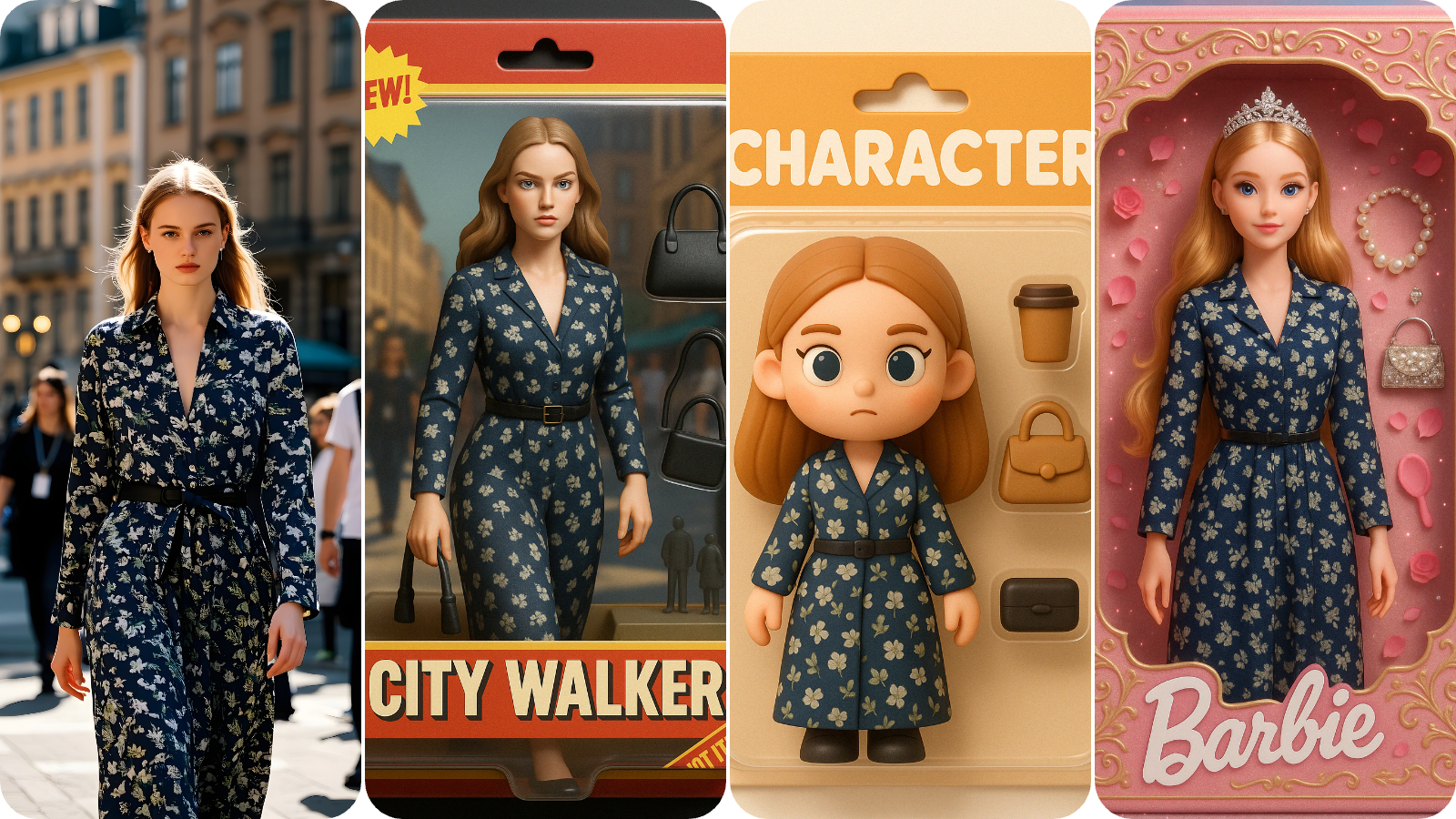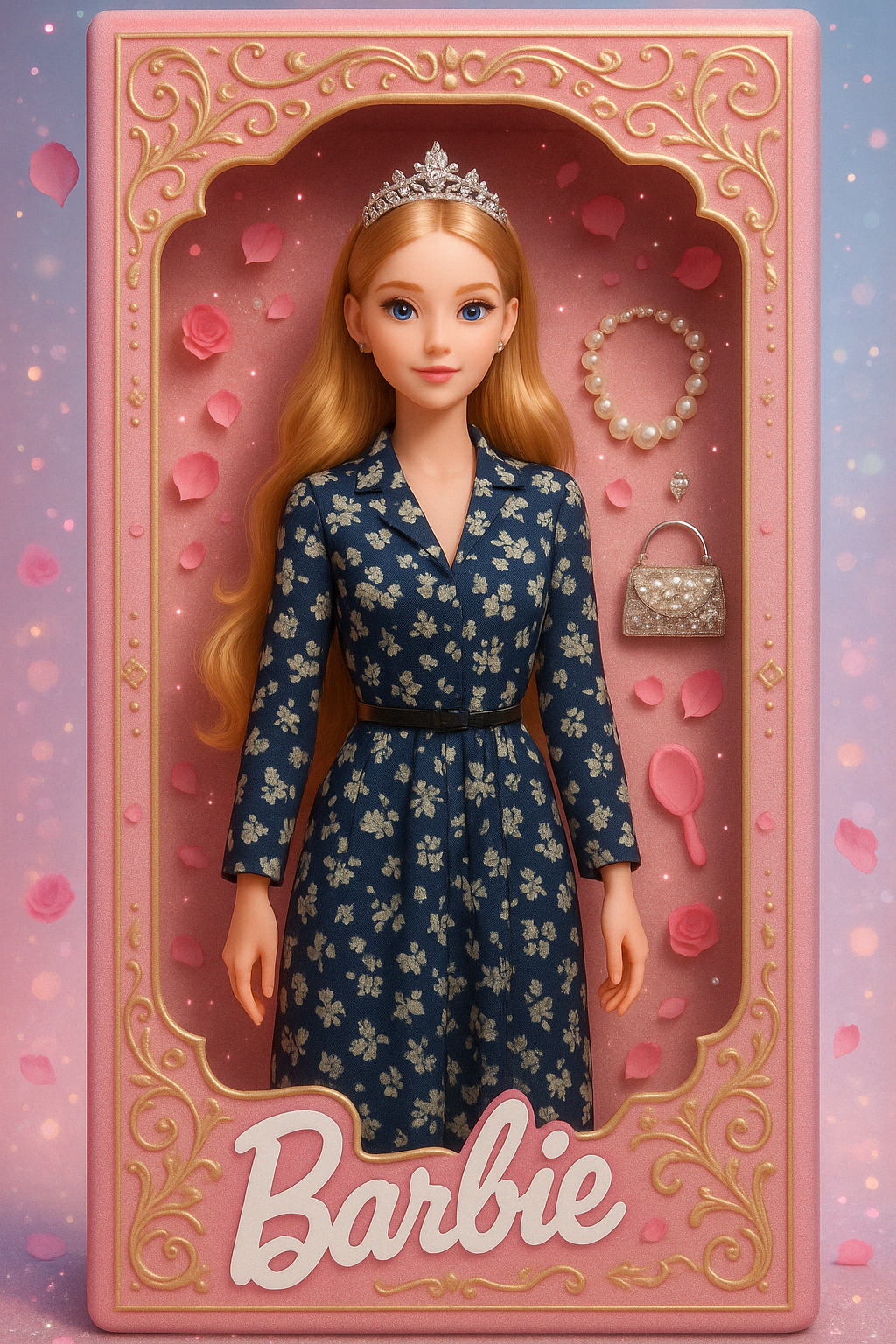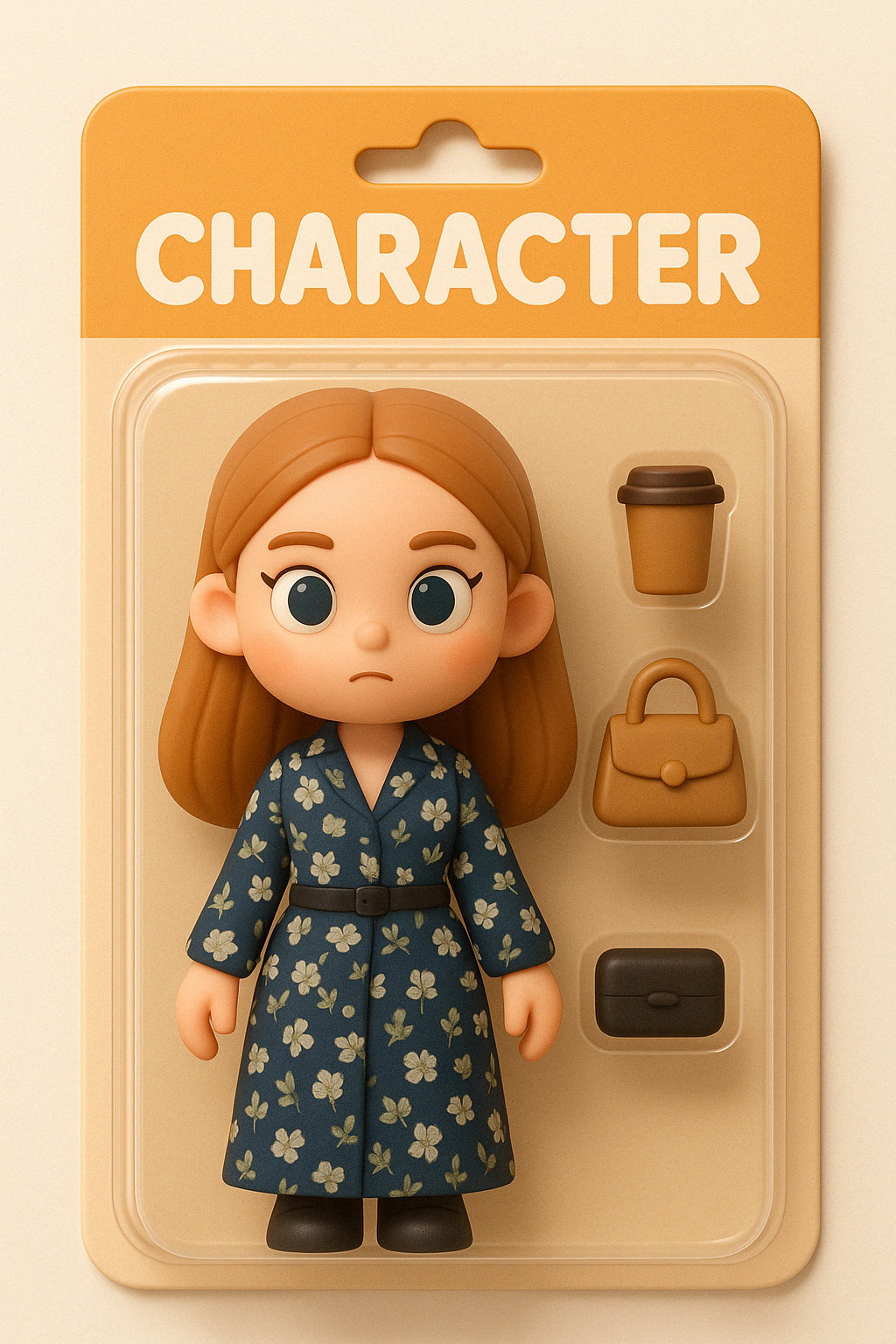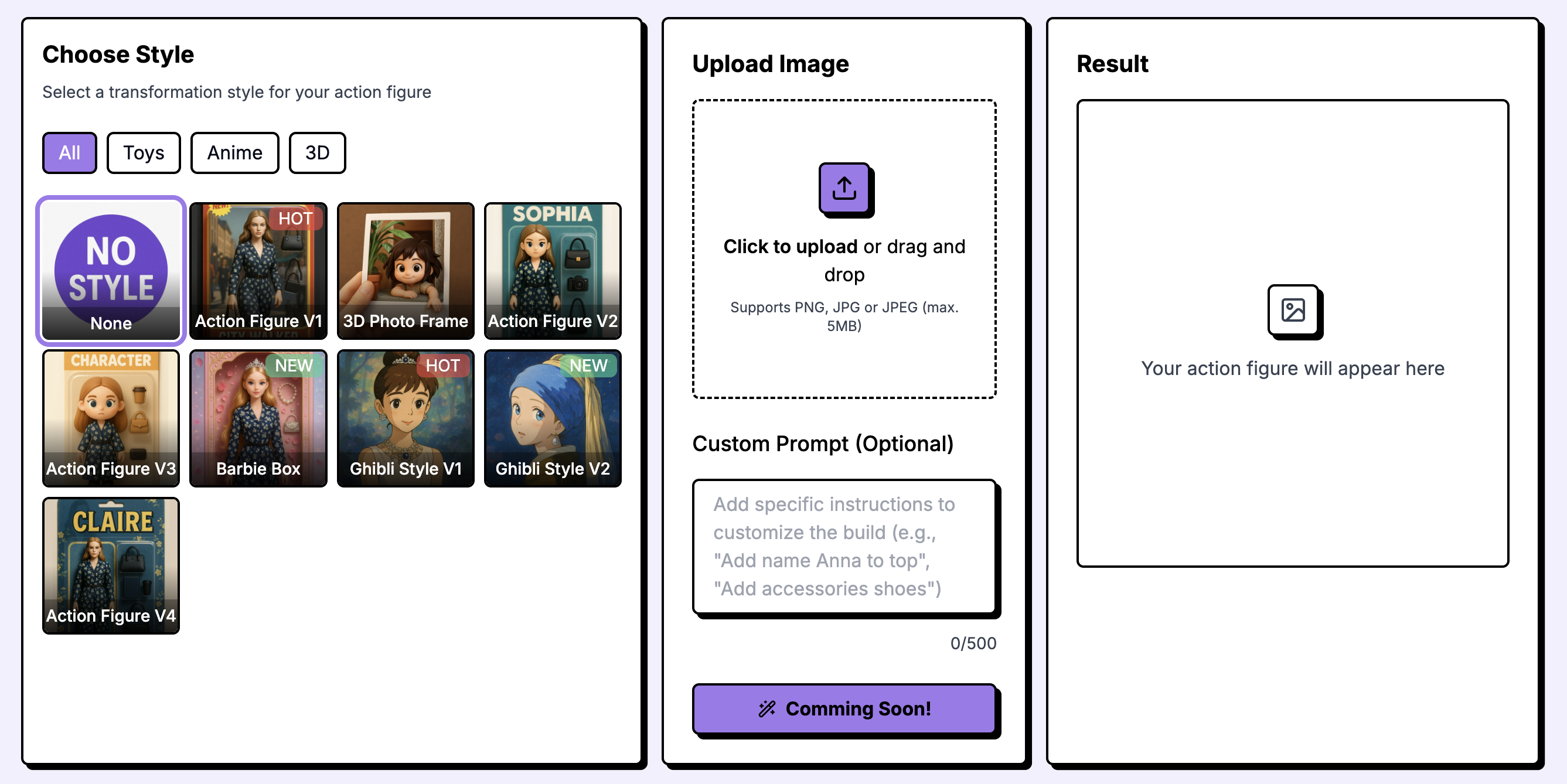How to Make AI Action Figure: The Ultimate Guide for 2025

Create stunning custom AI action figures with our comprehensive guide
Article outline
Introduction to AI Action Figures
Action figures have long been a staple of collectible culture, offering tangible representations of beloved characters from entertainment media. With the advancement of artificial intelligence technology, a new category has emerged: AI-generated action figures. This innovative application allows for the creation of custom, detailed figurines based on any image or concept.
The development of AI action figures represents a significant intersection between traditional collectibles and modern digital art. These creations offer unique opportunities for personalization, creative expression, and novel gift ideas that were previously inaccessible without professional design and manufacturing capabilities.
This comprehensive guide explores the methodology, tools, and techniques for creating AI action figures in 2025, providing both beginners and experienced creators with valuable insights into this rapidly evolving field.
Key Topics Covered in This Guide:
- Definition and characteristics of AI action figures
- Essential tools and resources for generation and optimization
- Systematic process for creating custom action figures
- Effective prompt engineering techniques for various styles
- Current market trends and future developments
- Professional techniques for achieving high-quality results
What Are AI Action Figures?
AI action figures are digitally generated 3D character designs created using artificial intelligence algorithms. These designs transform standard photographs or concept art into detailed, articulated action figure representations with realistic textures, posing, and stylistic elements.
Unlike traditional action figures that require extensive design, sculpting, and manufacturing processes, AI-generated figures can be created rapidly using specialized image generation tools. The quality of these digital creations continues to improve as AI models become more sophisticated in understanding the physical characteristics of collectible figures.
Get Your Own AI Action Figure
In 3 Simple Steps



Key Characteristics of AI Action Figures:
Articulated Design
Visible joints and posable limbs that replicate manufacturing standards
Plastic-Like Texture
Material rendering that simulates injection-molded plastic surfaces
Character Stylization
Balanced adaptation of features to match toy design conventions
Packaging Elements
Optional retail presentation components for enhanced authenticity
Customizable Details
Accessories, color schemes, and thematic design elements
3D Rendering
Three-dimensional visualization with appropriate lighting and shadows
Market Development:
The AI action figure trend gained significant traction in late 2023, with market growth exceeding 300% in 2024 as specialized AI models were developed specifically for toy and figurine generation. This rapid expansion has been driven by both consumer interest and technological advancements in image generation capabilities.
Tools & Resources You'll Need
Creating high-quality AI action figures requires appropriate tools and resources. This section outlines the essential platforms, software, and reference materials needed to achieve professional results.
Recommended AI Platforms
Specialized Action Figure Generators
- AI Action Figures - Provide multiple styles for users to generate with one click, no need to worry about prompt
- Clipfly AI - Easy to operate
- ToyBox Generator - Specialized for stylized and cartoon-aesthetic figures
General AI Image Generation Tools
- ChatGPT - Prompt can be customized freely, with good effect
- Midjourney - Effective for detailed, artistic renderings with appropriate prompting
- DALL-E 3 - Suitable for creative variations and dynamic posing
Platform Recommendation
For those new to AI action figure creation, AI Action Figure offers the most accessible entry point with its intuitive interface and pre-configured settings optimized for action figure generation. The platform provides an excellent balance of quality and ease of use for both beginners and experienced creators.
Try AI Action FigureStep-by-Step Creation Guide
This section provides a systematic approach to creating AI action figures, from initial preparation to final output. Following these steps will help ensure consistent, high-quality results.
Prepare Reference Images
Begin with high-quality source images that will serve as the foundation for your AI action figure:
- Select images with even lighting to minimize shadow complications
- Front-facing or three-quarter angle views provide optimal results
- Remove or simplify complex backgrounds for better subject isolation
- Ensure key features are clearly visible and well-defined
Select Action Figure Style
The selected style will inform prompt construction in subsequent steps. Each style category has distinct characteristics that influence articulation, proportions, and material representation.
Develop Effective Prompts
Construct detailed prompts that clearly communicate the desired action figure characteristics to the AI system:
Standard Action Figure Prompt Template
Essential prompt components:
- Subject description: Provide specific details about the character's appearance, attire, and distinguishing features
- Technical specifications: Include articulation points, scale, and material properties
- Style references: Mention specific toy manufacturers or product lines for stylistic guidance
- Presentation parameters: Specify lighting conditions, background, and photographic style
Generate the Action Figure
Execute the generation process using your selected AI platform:
- Upload the prepared reference image to your chosen AI tool
- Input your constructed prompt in the text field
- Generate multiple variations to ensure optimal results
- Review outputs and identify the most successful renditions

Technical Note:
Initial generation attempts may produce suboptimal results. This is a normal part of the process. Generate multiple variations with slight prompt modifications to explore the solution space effectively. Each AI platform has unique characteristics that may require specific optimization strategies.
Finalize and Export
Complete the creation process with appropriate output handling:
- Export in high resolution for maximum detail preservation
- Archive variations and intermediate results for future reference and iteration
- Document prompt parameters and settings for reproducibility and process improvement
- Consider physical production options through 3D printing services if desired
Effective Prompts for Action Figures
Prompt engineering is critical to achieving high-quality AI action figures. The following templates have been developed and refined through extensive testing to produce consistent results across different AI platforms:
Modern Detailed Action Figure
Superhero Action Figure
Vintage 80s Style Figure
LEGO Minifigure Style
Anime Figure Style
Advanced Prompt Engineering Techniques
- Specificity optimization: Include precise material descriptions and manufacturing details (e.g., "injection-molded ABS plastic with slight texture")
- Photographic parameter specification: Include technical photography terms (e.g., "product photography with soft box lighting" or "macro lens with shallow depth of field")
- Material contrast definition: Specify varied surface treatments (e.g., "matte finish body with glossy metallic paint applications on armor elements")
Popular AI Action Figure Styles
This section examines the most prevalent AI action figure styles and their distinctive characteristics:
Modern Articulated
Contemporary collector-grade figures featuring extensive articulation points (20+ joints), detailed sculpting, and premium paint applications. These emulate current high-end retail offerings from manufacturers like Hasbro's Marvel Legends or McFarlane Toys.
Retro Nostalgia
Vintage-inspired designs featuring limited articulation, simplified sculpting, and bold color schemes. These capture the aesthetic of 1970s-1990s action figures from lines such as original Star Wars, Masters of the Universe, or early G.I. Joe figures.
Anime/Manga Figures
Japanese-inspired designs with stylized proportions, expressive features, and vibrant color palettes. These reflect the aesthetic of contemporary anime collectibles such as Figma, Nendoroid, or Banpresto figures, often featuring dynamic poses and exaggerated expressions.
Building Block Figures
Modular construction-inspired designs featuring standardized proportions and simplified features. These emulate the aesthetic of LEGO minifigures, Minecraft characters, or similar block-based toys with their distinctive geometric simplification and interchangeable components.
Pro Tips & Best Practices
This section provides advanced techniques for optimizing AI action figure generation results:
Lighting & Photography Optimization
- Specify "studio lighting with soft boxes" for professional product presentation
- Implement "directional lighting" for enhanced sculptural definition
- Include "macro photography lighting" for detailed component visualization
- Request "shallow depth of field" for professional focus control
Material & Texture Enhancement
- Define specific plastic finishes (e.g., "semi-gloss ABS plastic with fine texture")
- Include "manufacturing detail elements" such as mold lines or assembly seams
- Specify "metallic paint applications" for hardware and decorative elements
- Implement "surface wear simulation" for vintage or used appearance when appropriate
Articulation & Posing Techniques
- Specify precise joint mechanisms (e.g., "double-jointed elbows" or "ball-jointed hips")
- Define pose characteristics ("neutral museum pose" or "dynamic action stance")
- Include "visible joint hardware" such as pins or screws for authentic appearance
- Request "stability elements" such as figure stands or foot pegs where appropriate
Packaging & Presentation Strategies
- Include "blister pack with cardback" for authentic retail presentation
- Specify "display base with nameplate" for collector presentation
- Request "period-appropriate packaging design" for vintage-style figures
- Implement "professional product photography setup" with appropriate backgrounds
Advanced Technique: Multi-Angle Presentation
For comprehensive figure visualization, implement a systematic multi-view generation approach:
- Generate the primary frontal view as the reference standard
- Create a posterior view using "back view of the same action figure" prompt
- Develop profile views from both left and right perspectives
- Generate detailed close-up views of significant features
- Compile all views into a comprehensive presentation layout
This methodology produces a complete product visualization that effectively communicates the three-dimensional characteristics of the figure. The resulting presentation closely resembles professional product photography used in retail catalogs and collector documentation.
Current Trends in AI Action Figures
This section examines the evolving landscape of AI action figure development and application:
Advanced Articulation
Current development focuses on increasingly sophisticated joint systems with enhanced range of motion and stability. AI models are now capable of generating realistic articulation points that accurately represent manufacturing standards, with some designs featuring 30+ points of articulation.
Personalized Representations
The creation of personalized action figures based on individual portraits has become the predominant application in this field. Specialized AI models have been developed to accurately translate facial characteristics and personal attributes into action figure format while maintaining recognizable likenesses.
Vintage Design Resurgence
Historical toy aesthetics from the 1970s-1990s have experienced significant renewed interest. This trend leverages nostalgia while benefiting from the relative simplicity of these designs, which are well-suited to current AI generation capabilities.
Physical Production Integration
Emerging technologies are bridging the gap between digital designs and physical production. New tools can convert AI-generated action figure images into 3D printable models, enabling the creation of tangible objects from digital designs with increasing fidelity and detail.
Conceptual Hybridization
Cross-genre and cross-property conceptual explorations have gained significant popularity. These creative exercises combine disparate intellectual properties or place characters in unexpected stylistic contexts, demonstrating the flexibility of AI-based figure generation.
Comprehensive Presentation
The scope of AI action figure creation has expanded beyond the figure itself to include complete retail-style packaging, accessories, and environmental context. This holistic approach creates more convincing and commercially viable presentations.
Market Projection: 2025-2026
Based on current technological trajectories and market indicators, the following developments are anticipated in the AI action figure sector:
- Integrated Production Pipelines: Development of streamlined services that directly convert AI designs to manufactured figures through automated production systems
- Augmented Reality Integration: Implementation of AR technologies that enable interactive visualization of AI figures in physical environments
- Commercial Product Development: Adoption by established toy manufacturers for limited edition and customized product offerings
- Advanced Articulation Systems: Enhanced control over joint mechanics and posability in AI-generated designs
- Animation Capabilities: Development of tools for creating animated sequences featuring AI-generated action figures
Conclusion
The creation of AI action figures represents a significant advancement in the application of artificial intelligence to collectible design and personalized art. This technology bridges traditional toy manufacturing aesthetics with cutting-edge digital creation tools, enabling unprecedented customization and creative expression.
The methodologies outlined in this guide provide a structured approach to generating high-quality action figure designs using AI tools. By following these established processes and implementing the recommended techniques, creators can achieve professional-grade results that effectively capture the distinctive characteristics of physical action figures.
As AI technology continues to evolve, we can anticipate further refinements in generation quality, expanded style options, and increased integration with physical production methods. The AI action figure field represents an innovative intersection of nostalgia, collectible culture, and technological advancement that will continue to develop in sophistication and application.
Implementation Recommendations
For optimal results when creating AI action figures, consider the following implementation strategies: